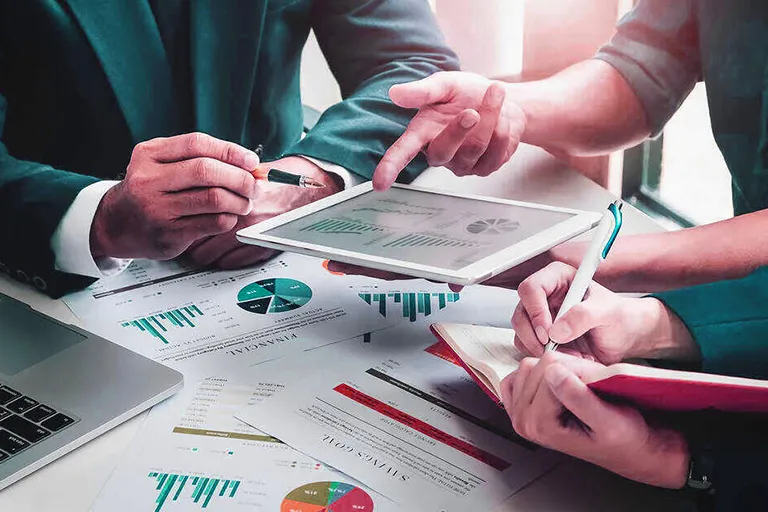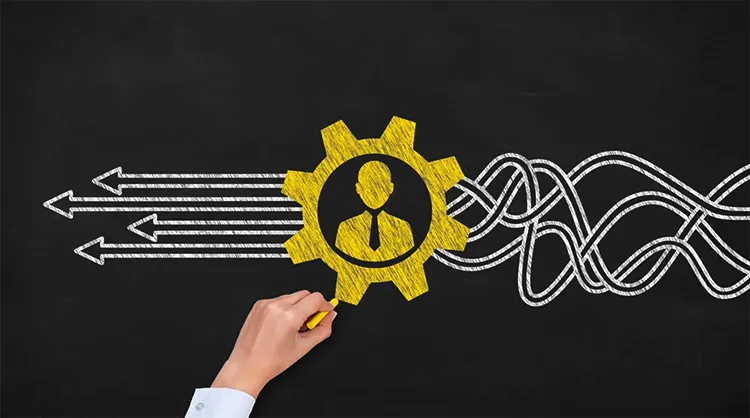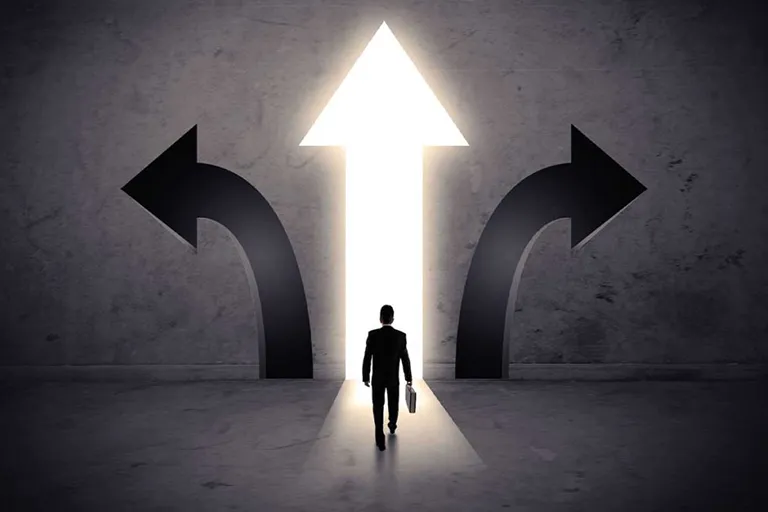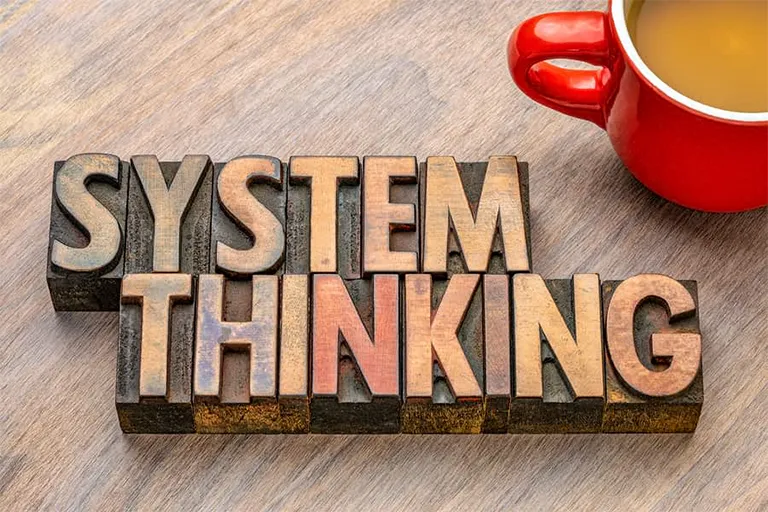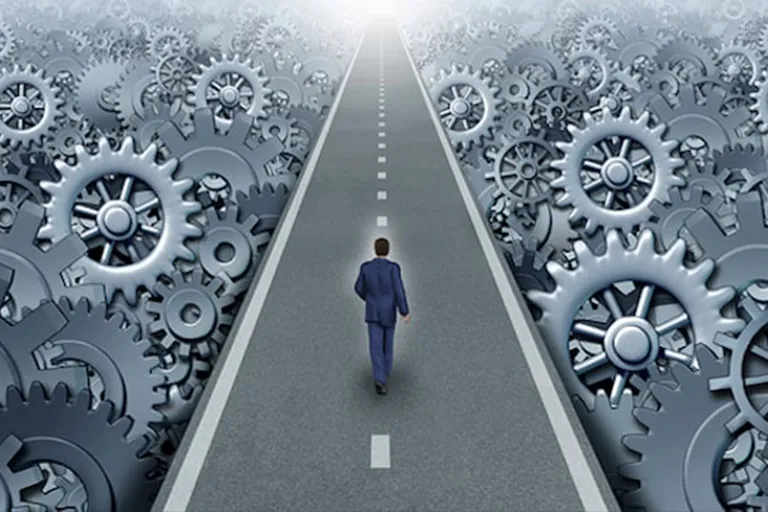The production and supply of goods and services are two of the well-known methods of producing economic value.
In radio and television and in interviews with officials, we often hear them talking about producers of goods and suppliers of services.
But the question is what is the difference between goods and services and how can these two be separated from each other?
And of course, another question is, what is important for the senior manager of a company, whether its product is called a product or a service? Or in other words, what are the consequences of paying attention or not paying attention to this separation?
The difference between goods and services
It seems that the principle of this issue, that there are differences between goods and services, is reasonable and acceptable to a large extent, and most of us feel that, for example, car production cannot be considered the same as catering in a restaurant.
But at the same time, there is not much consensus about what are the origins, roots and consequences of these differences.
Here, we review some of the known differences between goods and services, and further, we will explain that even in these limited cases, there are many buts and ifs.
1- The difference in touch and intuition
One of the most important characteristics of goods is their tangibility.
On the other hand, it seems that services are similar and common in not being touchable or so-called intangible.
According to this description, shoes or televisions or cars or chewing gum are examples of goods. Because they are tangible and visible and you can touch them.
On the other hand, things like moving letters, giving advice, insurance coverage and educational activities are not tangible and no one has ever put a finger on them. So you can consider them as service.
2- Difference in accumulation and storage
Another characteristic that is usually mentioned for goods and is not present in the case of services is stackability. Goods can be stacked and stored.
Consider a hotel that has 30 empty rooms tonight.
Based on the reservation statistics, it seems that these thirty rooms will remain empty tomorrow night as well.
This service supply capacity cannot be accumulated and stored.
In other words, the empty capacity of the hotel burns and disappears every night, and the day after tomorrow, we will not have ninety empty rooms.
Just compare the situation of the hotel with the situation of a clothing manufacturer.
Suppose the capacity of the clothing producer is, for example, 30 shirts per day.
If this producer cannot sell the clothes he produced today, he can store them and sell them in the coming days and weeks.
3- Difference in consumption and use
Consider a manufacturer that produces and supplies goods such as bags and shoes, or home appliances and automobiles.
After production, the product can be stored for a short or long time. Then it is sold to the customer and the customer uses it when he sees fit.
In other words, there can be a short or very long time between the time of production and use or consumption of goods.
But think of a repairman who fixes appliances or cars.
He cannot store his repair services and sell them whenever he wants. Also, the customer cannot store his service. Providing the repair service and using the repair service are done exactly at the same time. In other words, the service is consumed at the same moment of supply.
4- Difference in creation and production
Goldsmiths and jewelers produce their products without knowing who will buy them; they display; and they sell
But can a family counselor or a doctor do that? Can they stay in their office for months and years and produce services until one day a customer is found?
The doctor can offer his service when there is a patient. Counseling service can be provided when both the counselor and the counselee are present.
For this reason, in the description of service, they say that service requires cooperation in creation and production.
Of course, one view is to say that the fourth case is another expression of the same third case. Because the simultaneity of production and consumption can be attributed to the same cooperation in creating service.
Capacity management
The discussion of capacity management on both sides of the supply and demand equation is an important issue that we must pay attention to when examining the difference between goods and services.
This capacity management manifests itself in three ways, which includes product inventory management, service supply capacity management, and service demand management.
Inventory management
In the discussion of product production, one of the key concepts is inventory management.
I know my current inventory. I know that tomorrow’s production will be added to today’s inventory.
So I try to manage production in a way that I can sell that inventory and re-inject the resulting cash back into my business.
Supply capacity management
In the discussion of service supply, instead of inventory management, another key concept is considered. A concept called supply capacity management.
What is the capacity of my hotel or the number of rooms that our hotel offers every night so that we can sell most of it?
Because if we cannot sell this capacity every night, it will not exist tomorrow and will not be usable.
This issue can be raised in a way about all service businesses. Consider the example below.
Managers of a bank should think about the answer to the question that we want to answer the request of how many people at every hour of the day?
A liberal approach here can break the bank, so we consider the box office enough that no one is delayed. As much as necessary, we pay salaries and hire personnel.
A narrow-minded approach can also lead to customer dissatisfaction and ultimately the bank’s loss, because we reduce the number of cash registers, which reduces the cost of human resources. On the other hand, customers will wait more and stand in line.
The main problem in service supply and in other words in capacity management is to find an optimal capacity.
It is obvious that a bank can have a large number of counters and in each counter, an employee follows up all the needs and demands of the customer.
But the number of employees increases the cost of bank services.
On the other hand, by reducing the number of counters, even though the cost of providing the service will decrease, but the customer will have to wait longer in the queue, and naturally, customer satisfaction will decrease.
In supply capacity management, the number of human resources is just one of the factors, and depending on the type of business, there can be dozens of other factors. For example, Internet service companies plan on the amount of traffic purchased and perform a part of capacity management in this way.
Internet service providers, in each time period, buy a certain amount of Internet traffic from their upstream collections and sell this traffic to their customers.
Naturally, they can buy more traffic and create more capacity.
But if the customers don’t buy the entire amount of traffic at that point in time, the cost of the traffic will increase.
Conversely, these companies can reduce the cost of unused capacity by reducing the amount of traffic they buy from their upstream, but customer satisfaction will probably decrease during peak traffic moments.
In practice, these companies estimate the average consumption of customers and consider a small margin of safety and plan for the supply of that capacity.
Customers experience more demand in the form of reduced internet speed.
Service demand management
We must remember that not all management is focused on the inventory and supply side, and demand management is also a tool that businesses use.
Imagine the same Internet service company that we mentioned a little above. Such a company may face a shortage of demand at certain times and an excess of demand at other times.
These companies usually use different methods to change customer preferences and, in other words, adjust the customer’s consumption pattern.
Making traffic cheaper at midnight, higher prices on international traffic and offering special traffic packages at the same time as national or religious holidays and ceremonies are examples of these companies’ efforts to persuade customers to change their behavior.
Changing the prices of hotels and flight tickets in different periods of time is another example of demand management.
Weaknesses of dividing goods and services
Up to this point of the discussion, we mostly discussed the arguments and explanations and the basics of the dual division of goods and services and did not mention the weaknesses and criticisms of this model.
Although you yourself have probably noticed some of the ambiguities and weaknesses of this division by now, but for more emphasis, we list some of these items below:
Absolute product and pure service
The first criticism that is usually addressed is that there are many cases in which it is not possible to place a product in the category of goods or services in an absolute and black and white way. Rather, the product is placed in the gray spectrum between the two.
The development of information technology and digital technology has strengthened and intensified this situation.
For example, consider a company that processes data in social networks in real time and presents the obtained information in the form of reports to buyers.
The company’s internal process is more of a service, but at the same time, from the customer’s point of view, it can be said that the company offers a product. This product can even be stored and the customer can sell it to another person legally or illegally.
Being tangible in the digital world
It is true that on the one hand, counseling services cannot be touched with a finger and on the other hand, you can press your finger on a glass or a chair as much as you want, but there are many products in today’s world that use this. Physical and non-physical criteria about them can be misleading.
Simultaneous production and use
When you purchase insurance coverage for a year and not using it causes you to get a discount on subsequent visits, you are effectively using a service that can be used outside of the period committed by the service provider.
The example is not the least, and judging whether production and use are simultaneous or not, cannot be completely objective.
Change of nature in the middle of the path
Consider charging SIM cards of telecom operators.
The essence of telecommunication services, as we use the term service in describing them, is of service.
By paying money, you can buy a recharge code to use this service. But this charging code itself turns into a commodity and is even used in such a way that it is exchanged between people instead of cash.
In fact, it can be said that we are dealing with a product here, through which the right to access a service is exchanged between people.
But when we look at the complex business models formed on the charging code, we realize that it is a bit difficult to give a definite and simple verdict about this complex game.
Why the division of goods and services?
There are many and various weaknesses and ambiguities in the dual division of goods and services, and of course, goods and services are not bipolar; Rather, they are a spectrum where every product is placed somewhere in this spectrum.
So it is reasonable to ask that despite these weaknesses, is it still justified to use this model?
The answer is that despite the many weaknesses, in many cases, the use of this model is still useful and even necessary, and we should not consider the division of goods and services and discussing its details as merely a literary concern.
We will examine some of the reasons and arguments related to the dual usefulness of goods and services.
It has a place in the minds of many of us
If you were told to divide the six words shoes, pencils, lawyer, soda, advice and repairs into two categories, you would probably divide them as follows:
- Pencils, shoes, soft drinks
- Consulting, advocacy, repairs
Therefore, in the case of many products, the dual division of goods and services can still be used, and we should not feel that this division is completely incorrect and without roots after seeing the exceptions.
It helps in product design and development
In product development, offering a mixed package of goods and services is a very common strategy .
In selling a refrigerator, mobile phone or even a simpler product like a book, we can compete better when we sell a combination of goods and services.
They have said so much about the importance of after-sales service that there is no need to repeat it here.
The segmentation of goods and services puts a map in front of entrepreneurs , idea makers and product development managers to see in which territory they can have more innovations and create a better competitive advantage.
It affects the valuation of businesses
The third point, which is very important, is the valuation of companies.
We know that in the real world, valuing a company is a complex task and much more than analyzing the income flow and adjusting it based on several side factors.
Let’s say you want to put a price on Instagram. Consider the following four approaches:
- Instagram is a provider of social communication services.
- Instagram is a huge warehouse of personal information of the people of the world.
- Instagram is a large warehouse of goods, which is designed to be filled and updated by a service called social communication.
- Instagram is a social communication service whose by-product is a large storehouse of personal information of people around the world.
These four seemingly similar views can form four different pricing methods, four different management strategies, and finally, four different businesses.
If a division is so influential, it cannot simply be dismissed because of its weaknesses and ambiguities.
The relationship between products, goods and services
The correct and scientific way is to use the term product as a more general concept that covers goods and services.
But in more general conversations, product is considered equivalent to goods and service is referred to separately. So don’t be surprised if you see the term product or service.
Those who use the term “product” or “service” prefer to use “good” as a commodity equivalent.
For example, we know that in the commodity exchange, not all types of products are introduced, and most of the undifferentiated goods such as oil, wheat, metal ingots and the like are traded.
More than being sensitive to words, it is important to consider the difference between goods and services in our analyzes and decisions.
Ambiguity about goods and services
Suppose the manager of a radio or television network classifies his activities in the form of services, probably the first priority of such a manager will be to fill the capacity of the media in any way possible and naturally with minimum cost and maximum advertising revenue.
But the same manager may see the content as a commodity . In this case, his strategy will probably move towards offering products with longer life and different uses, such as the ability to sell independently, or the ability to market externally.
So maybe instead of asking whether your product is more of a product or a service, it is better to ask whether you evaluate your product more than a product or a service?
Do you see other differences between goods and services? Share your thoughts with us.


